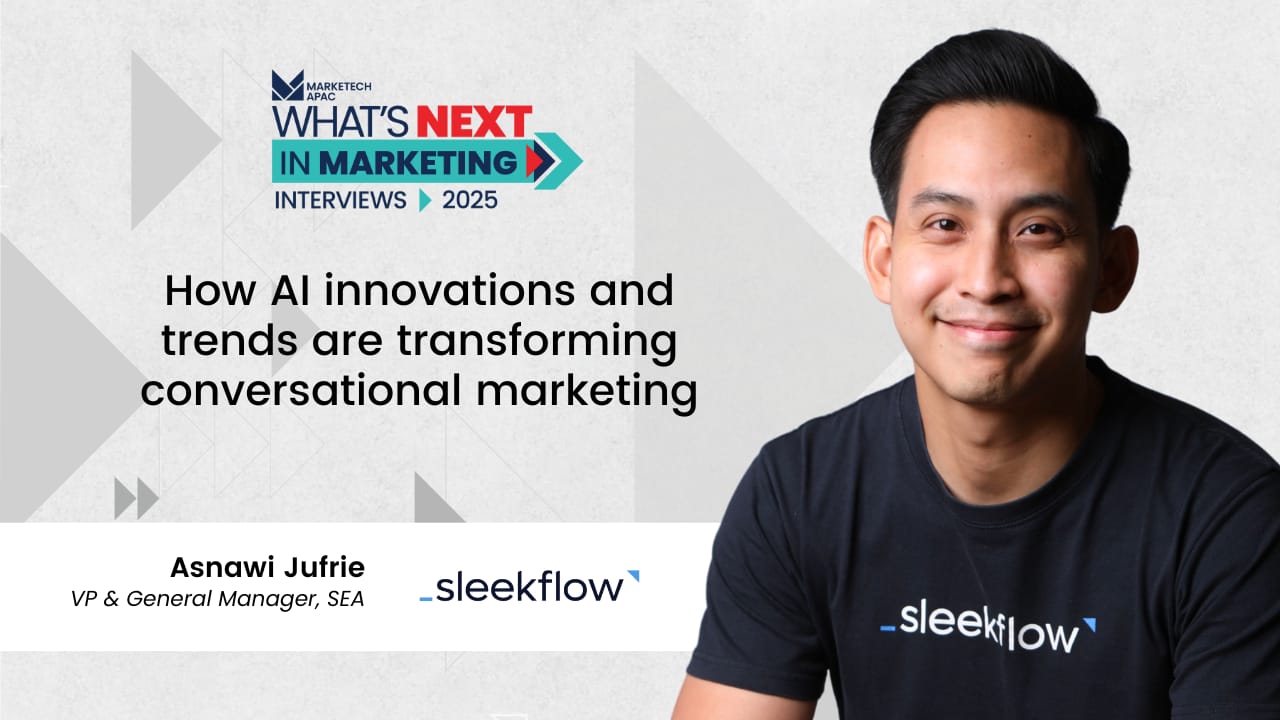At the recent NRF APAC Conference in Singapore, Jonathan Reeve, VP APAC for Eagle Eye, and I discussed the magic of omnichannel and personalisation. We explained that when these are done right, they should feel almost magical. Getting it right requires retailers to understand that omnichannel and personalisation are essentially two sides of the same coin, where omnichannel is the organisational goal and personalisation is what the customer expects.
Forces set to reshape APAC retail lnadscape
Several powerful forces are set to reshape retail across Asia-Pacific, creating challenges and significant opportunities for forward-thinking retailers. Market pressures, for one, are intensifying. Amidst a cost of living crisis, loyalty has the opportunity to ease pressures for consumers while providing retailers with an advantage, should they choose to adopt it, to maintain customer relationships and drive growth.
We also know that consumer expectations have fundamentally shifted. McKinsey research reports that 71% of consumers now expect companies to deliver personalised interactions. If you think about Spotify’s weekly playlists or Netflix’s viewing recommendations, customers now expect that same level of “made for me” experience wherever and whenever they shop, whether that’s online, in-store, or through mobile apps.
Meanwhile, we find ourselves in the middle of a new wave of technological transformation, where AI, data, and cloud-driven platforms and architectures can be powerful enablers of new ways to shop and save money. The tools to deliver true 1:1 personalisation at scale are no longer just the domain of tech giants, they’re accessible to retailers of all sizes.
Playing it nice
Personalisation isn’t just about being nice to customers (though that matters enormously). The business case for personalisation has never been stronger. Boston Consulting Group’s latest research is striking: “Over the next five years, US$2 trillion in revenue will shift to companies that create personalised experiences and communications.”
The most compelling evidence for personalisation’s power comes from those already making it work. Take Tesco’s recent success with their Clubcard Challenges. As CEO Ken Murphy shared in January 2025: “We introduced personalisation and gamification through Clubcard Challenges to over 10 million customers, and that had a great effect. There was a really, really strong response to that.”
Clubcard Challenges effectively reward participants who meet shopping or purchasing goals presented via the Tesco app. These might manifest as a big points boost for purchasing a particular item or category of product from certain brands in a given period.
When Tesco targeted 10 million Clubcard members with these challenges, 76% of distinct visitors to the Clubcard Challenges pages converted to players, and 62% of players became winners by reaching their first reward. These aren’t just impressive engagement metrics – they represent real customer value and business impact.
EagleAI models make over 190 intelligent decisions to assign each individual a single personalised challenge, ensuring that targeted products, categories, spend thresholds, and rewards are perfectly tailored for each participant. Each challenge is designed to reward incremental spending, creating benefits for the customer, retailer, and participating suppliers.
Our analysis of personalised loyalty leaders shows consistent patterns, sales growth, and digital customer satisfaction scores.
People often ask about the technology that powers intelligent loyalty solutions like this. At Eagle Eye, we’ve built our entire platform on Google Cloud, using services like BigQuery, Looker, Kubernetes, and Vertex.ai to deliver real-time personalisation at scale.
Kubernetes handles promotion execution in real time, processing thousands of API calls per second; BigQuery serves as our data lake for billions of weekly offers; Looker enables retailers to analyse and optimise campaigns in real time; and Vertex.ai powers our personalisation algorithms that tailor offers to individual customers.
These components represent an effort to orchestrate technology in the service of customer experience. When customers interact with retailers using our platform, they feel recognised and rewarded in real time, see offers perfectly tailored to their needs and preferences, and experience programs that keep getting better over time.
The Profitability Possibility for APAC Organisations
We know that personalisation will become a key driver of profitability, and we know of the growth experienced by early and sophisticated players, as analysts have told us, and we have observed it firsthand.
For example, we’ve seen that it’s much more effective to be personally relevant than to rely on broad-brush discounts. We have observed scenarios wherein a generic 25% discount might only achieve a 5% redemption rate, wasting promotional spend on 95% of recipients. However, a personalised 13% discount, offered to customers who want that product, can achieve a 60% redemption rate.
Retailers could spend less on the discount but achieve dramatically higher engagement and sales impact.
The potential for personalisation extends far beyond traditional offers and promotions. We’re seeing early innovations in personalised cooking programs, health and wellbeing tracking, charitable giving options, and sustainability initiatives. The goal isn’t just to sell products but to create genuine value for customers. We expect that predictive and generative AI will accelerate this expansion dramatically.
Whether you’re a regional chain in Australia, a growing retailer in Southeast Asia, or an established brand expanding across multiple markets, the technology and expertise needed for personalisation success are now accessible.
Personalisation will reshape retail, and the only question is whether your business leads or follows. This transformation works across our client base, from Woolworths to Carrefour, and Morrisons to Loblaws. The technology exists, the business case is proven, and customers expect it.
At Eagle Eye, we’re passionate about helping retailers across Asia-Pacific rediscover the power of personalisation, but now at a scale that would have been unimaginable to that corner shop owner. The convergence of market pressures, consumer expectations, and breakthrough technology has created the perfect conditions for a personalisation revolution, and APAC retailers are well positioned to lead it.

This thought leadership piece is written by Aaron Crowe, Regional Director, Eagle Eye, Asia










